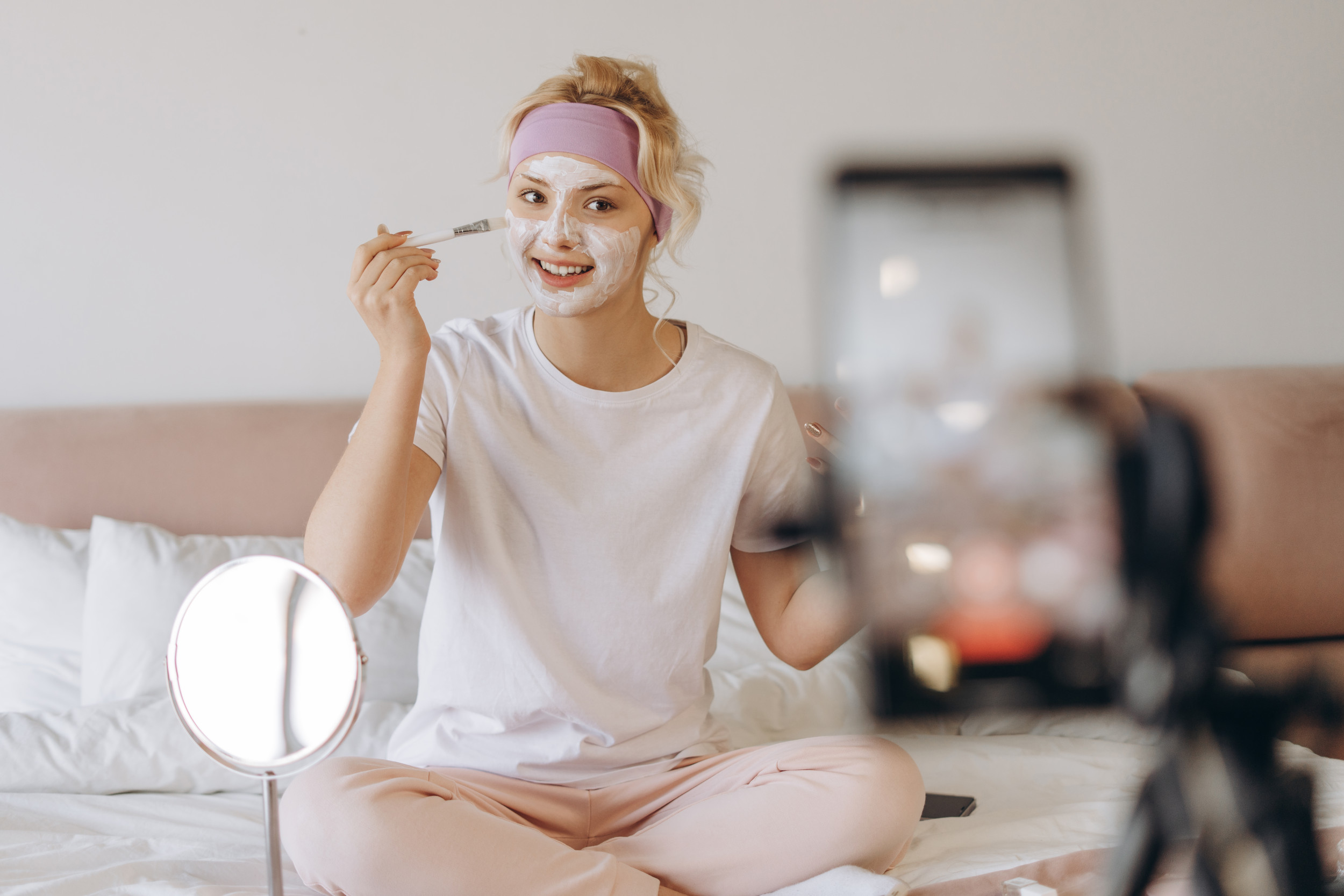
“Get ready with me” videos are overflowing on TikTok, drawing millions to watch influencers and the like walk through their skincare routines.
But lately, a new wave of content creators is entering the frame: middle schoolers or even children as young as seven layering serums, eye creams and exfoliants onto already delicate, youthful skin.
Now, new research has confirmed these types of videos can put teens at risk of lifelong skin allergy.

Mariia Vitkovska
The new peer-reviewed study from Northwestern Medicine, published today on June 9 in Pediatrics, is raising red flags about the popular trend of teen skincare routines shared on social media.
The study is the first of its kind to examine the dermatological and psychological risks tied to these viral beauty regimens.
Authors found girls between the ages of seven and 18 are applying an average of six different skincare products daily, with some layering more than a dozen.
“It’s problematic to show girls devoting this much time and attention to their skin,” said corresponding author Dr. Molly Hales, a postdoctoral research fellow and board-certified dermatologist in the department of dermatology at Northwestern University Feinberg School of Medicine.
The financial cost is also concerning. The average teen skincare routine costs $168 a month, according to the study, with some reaching upward of $500.
Despite the hype, the routines often neglect the basics: only 26 percent of daytime regimens included sunscreen—a critical oversight, especially for developing skin.
Yet it’s not just money being wasted. The study found that the top-viewed skincare videos featured an average of 11 potentially irritating active ingredients.
This cocktail of acids, retinoids and fragrances increases the risk of allergic contact dermatitis—a lifelong skin allergy that can permanently restrict a person’s use of certain soaps, shampoos and cosmetics.
“That high risk of irritation came from both using multiple active ingredients at the same time, such as hydroxy acids, as well as applying the same active ingredient unknowingly over and over again when that active ingredient was found in three, four, five different products,” Hales said.
In one analyzed video, a content creator applied 10 separate products in just six minutes. By the end of the clip, her face was visibly red and irritated.
“As she’s applying the products, she begins to express discomfort and burning, and in the final few minutes, she develops a visible skin reaction,” said senior author Dr. Tara Lagu, adjunct lecturer of medicine and medical social sciences at Feinberg and a former Northwestern Medicine hospitalist.
The researchers also observed an unsettling pattern in the aesthetics and messaging of these viral videos.
“We saw that there was preferential, encoded racial language in some cases that really emphasized lighter, brighter skin,” Lagu said. “I think there also were real associations between use of these regimens and consumerism.”
The videos tend to offer little to no health benefit for the children watching them, researchers concluded. Yet they’re virtually impossible for parents or pediatricians to monitor, thanks to the untrusted algorithms that power TikTok’s “For You” page.
“We’re setting a very high standard for these girls,” Hales said. “The pursuit of health has become a kind of virtue in our society, but the ideal of ‘health’ is also very wrapped up in ideals of beauty, thinness and whiteness. The insidious thing about ‘skin care’ is that it claims to be about health.”
Funding for the study was provided by the National Institute of Arthritis and Musculoskeletal and Skin Diseases of the National Institutes of Health (grant number 5T32AR060710-11). Other Northwestern authors include Drs Amy Paller and Walter Liszewski, and medical student Sarah Rigali.
Newsweek reached out to TikTok via email on 06/06/2025.




